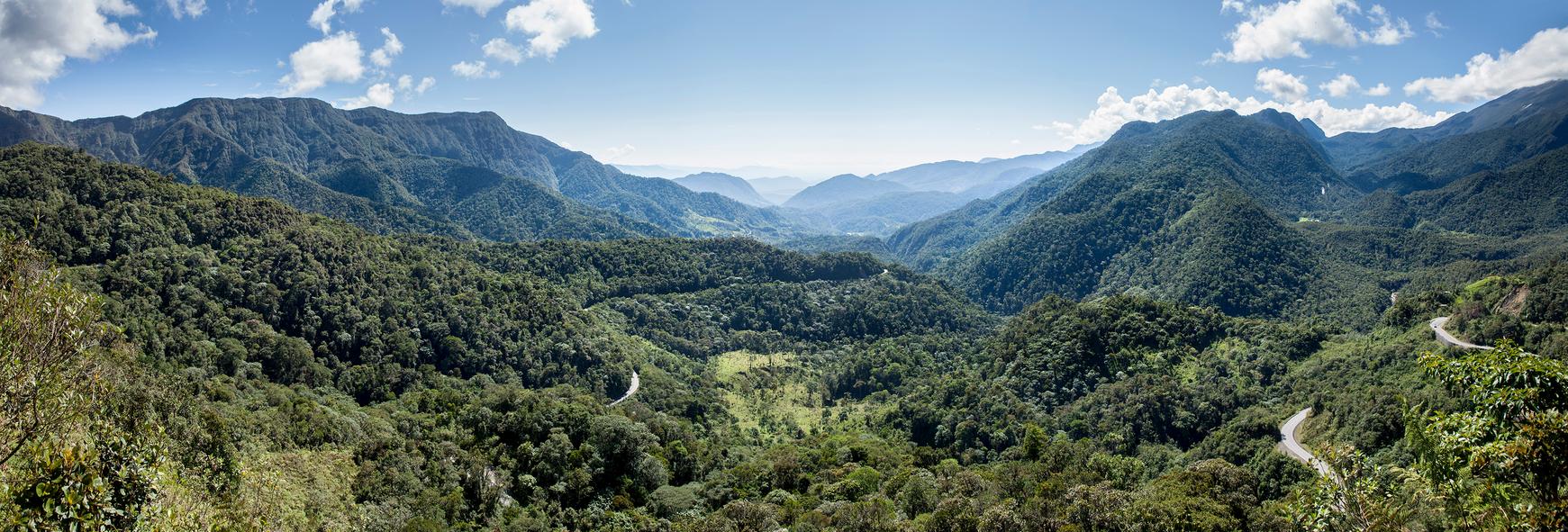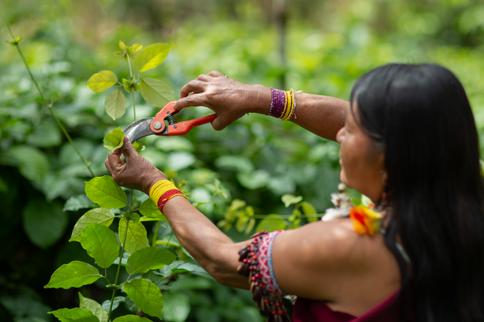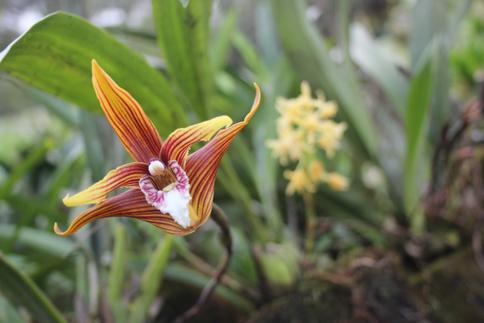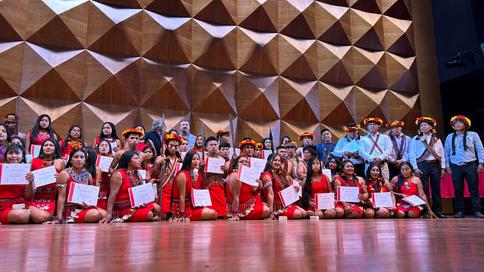
Supporting forests and people in Peru
The Alto Mayo project is a REDD+ (Reducing Emissions from Deforestation and forest Degradation) project protecting 182,000 hectares (450,000 acres) of Amazonian rainforest within the Alto Mayo Protected Forest in the San Martin region of Peru.
The forest saw high deforestation rates despite its protected status. Thanks to the project, between 2008 and 2020, deforestation in the Alto Mayo has declined by 59 percent, keeping 8.4 million metric tons of emissions from entering the atmosphere.
Theory of change
In response, a REDD+ project was established in partnership with the Peruvian national park agency (known by the acronym SERNANP in Spanish). The project sought to address the underlying drivers of forest clearance and to deliver positive benefits for local people and for the climate.
The project has reduced deforestation in part by brokering conservation agreements with local communities who agree to stop clearing forests in exchange for agricultural training, financial skills and access to specialty-grade coffee markets. To date, more than 1,300 such agreements have been signed in Alto Mayo — representing about 80 percent of the families living within the forest’s borders.
SERNANP, meanwhile, uses revenues from the sale of carbon credits from the project to employ forest rangers, improving enforcement and stopping illegal logging. Together, conservation agreements, agricultural training and forest monitoring are curbing deforestation — and the attendant climate-warming carbon emissions that it causes.
I am learning to help my family and to earn a better income and to make the biodiversity of the Alto Mayo Protected Forest better known. I am inspired by the love of nature and my children. Thanks to the support we receive I hope that in the future we will have our own micro-enterprise, because in the last few years we have improved a lot and we have a lot to offer.”
Local impact

Improved livelihoods
The Alto Mayo project has tangibly improved livelihoods in and around the project area. With many new settlers arriving in the area throughout the 2000s, the project has worked to facilitate their integration, opening up more than 500 sustainable job opportunities to date.
One notable area of improvement is coffee production. The project has provided routes by which families can prosper through farming coffee beans sustainably. To increase market access, the project supported the creation of a coffee cooperative known by its Spanish-language acronym, COOPBAM. In its first year of operation, COOPBAM exported 15,000 kilograms (33,000 pounds) of coffee beans that were certified and produced within the project area to Denmark.

Nature and biodiversity
The Peruvian Amazon is a biodiversity hotspot, and the Alto Mayo Protected Forest is no exception. More than 1,200 plants are native to the project area, as are numerous birds, mammals and reptiles. Of these, 25 are categorized as endangered by the International Union for the Conservation of Nature.
Thanks to the project’s investment in conservation enforcement, these species’ habitats are increasingly protected, providing them a chance to recover and preventing additional species from becoming endangered.

Environmental and agricultural education
In partnership with the SERNANP, the project is delivering environmental awareness and sustainable agriculture training for local people living in or near the project area.
With coffee production a significant driver of unsustainable land use, the project is focused on improving agricultural practices. Between 2018 and 2020, more than 2,800 people attended training classes on sustainable coffee production. Of these attendees, nearly a quarter (23.6 percent) were women.
Moreover, the project organizes environmental awareness classes in schools. With more than 80 sessions completed, at least 3,300 young people have participated in environmental awareness training.
Assurances in Alto Mayo
Sustainable Development Goals
The Alto Mayo project addresses the following goals (learn more about SDGs):
- No poverty
- Zero hunger
- Quality education
- Decent work and economic growth
- Responsible consumption and production
- Climate action
- Life on land
When we arrived in Alto Mayo, we did not know that we were in a protected area, or how to take care of it. Over time, the conservation agreements have opened many doors for us. It is as if we have been reborn. Now, I produce a high-quality coffee that protects the Alto Mayo Protected Forest and is enjoyed by the world. I have signed conservation agreements and thanks to this we have created COOPBAM [coffee growers’ co-op]. Thanks to fair trade we have better prices, and it has improved the quality of life of my family — and I can afford the education of my children.”
Further information
Conservation at work in Alto Mayo
In compliance with California Assembly Bill 1305 (2023), Conservation International shares the following information on its supported carbon projects: Alto Mayo Carbon Project Disclosure.